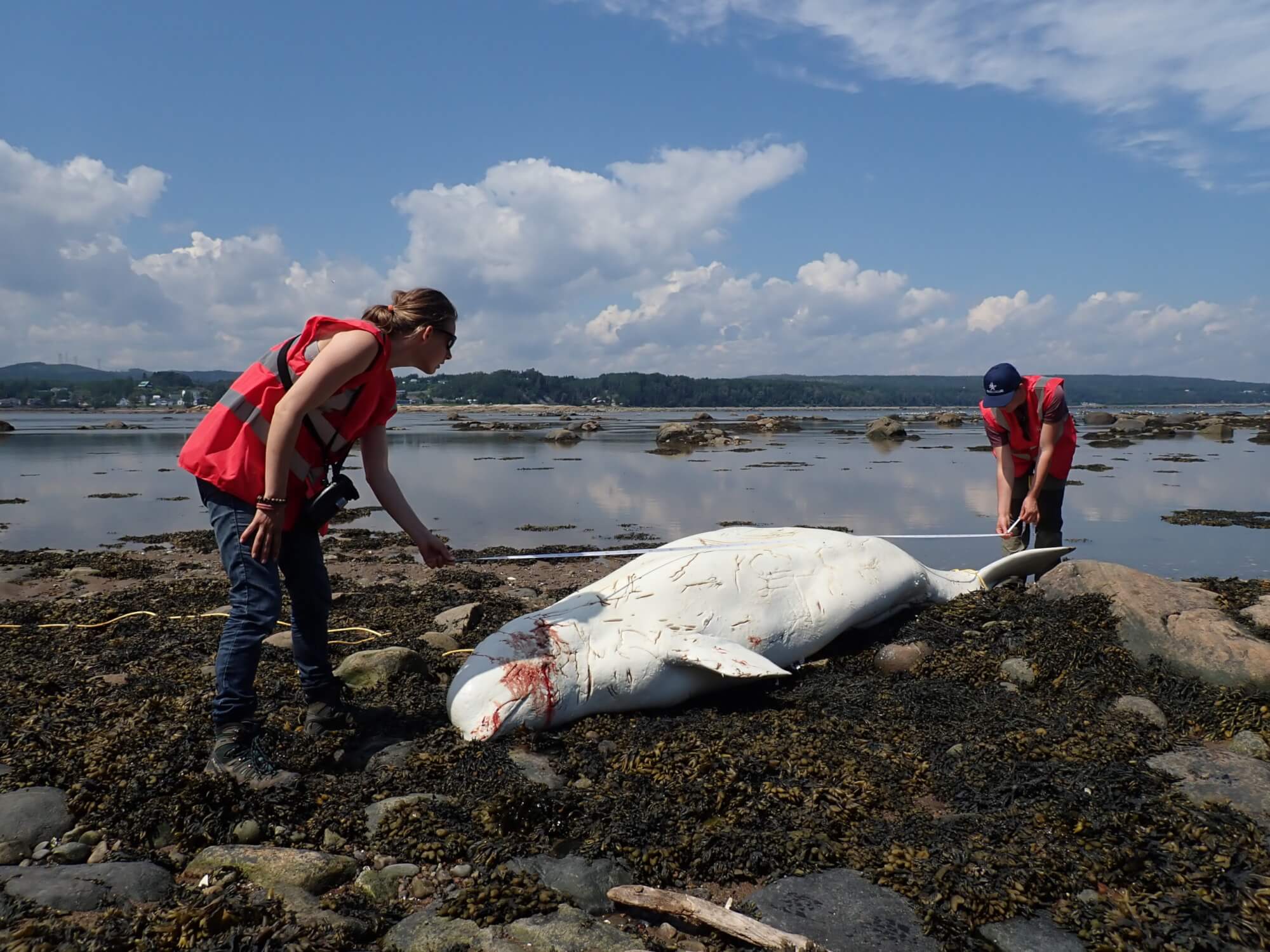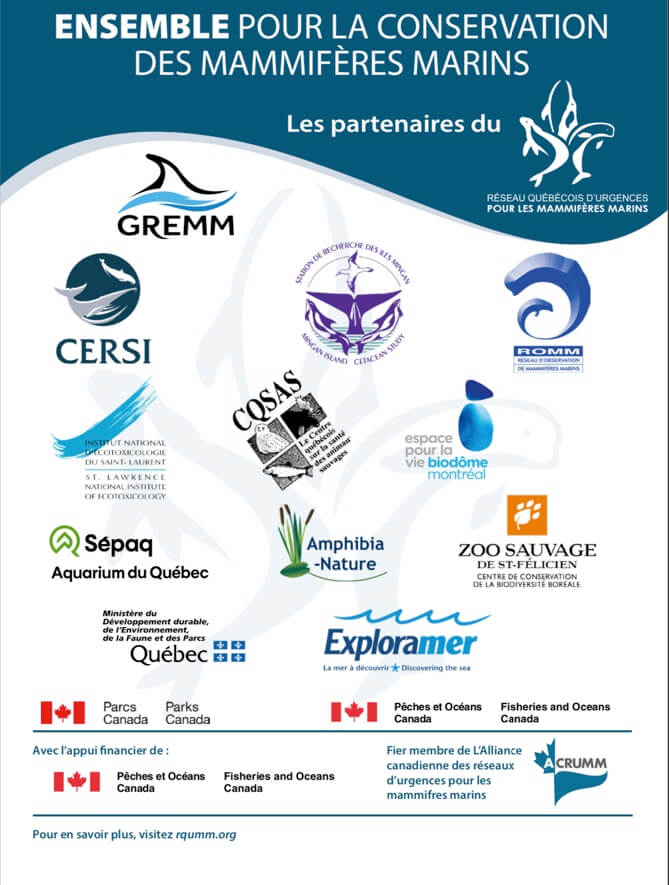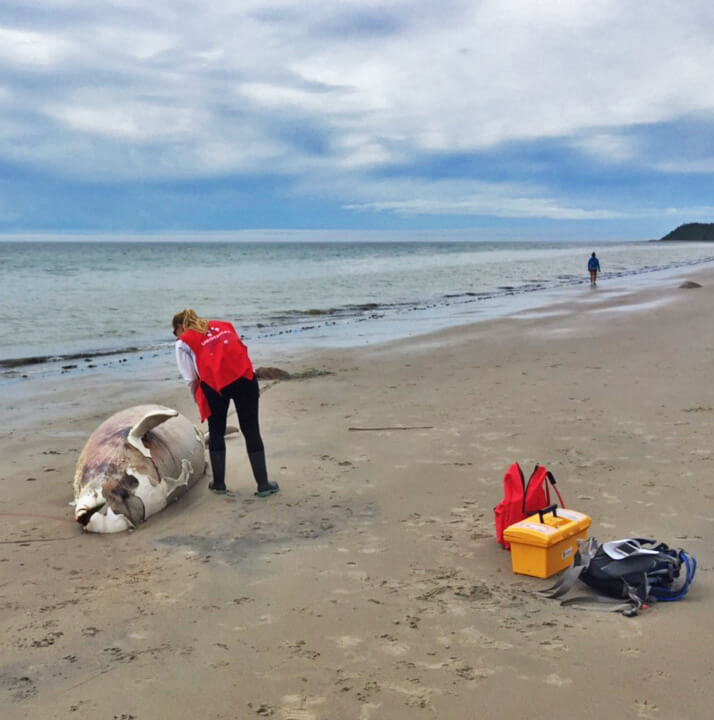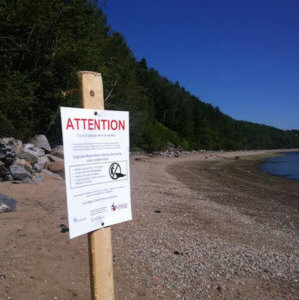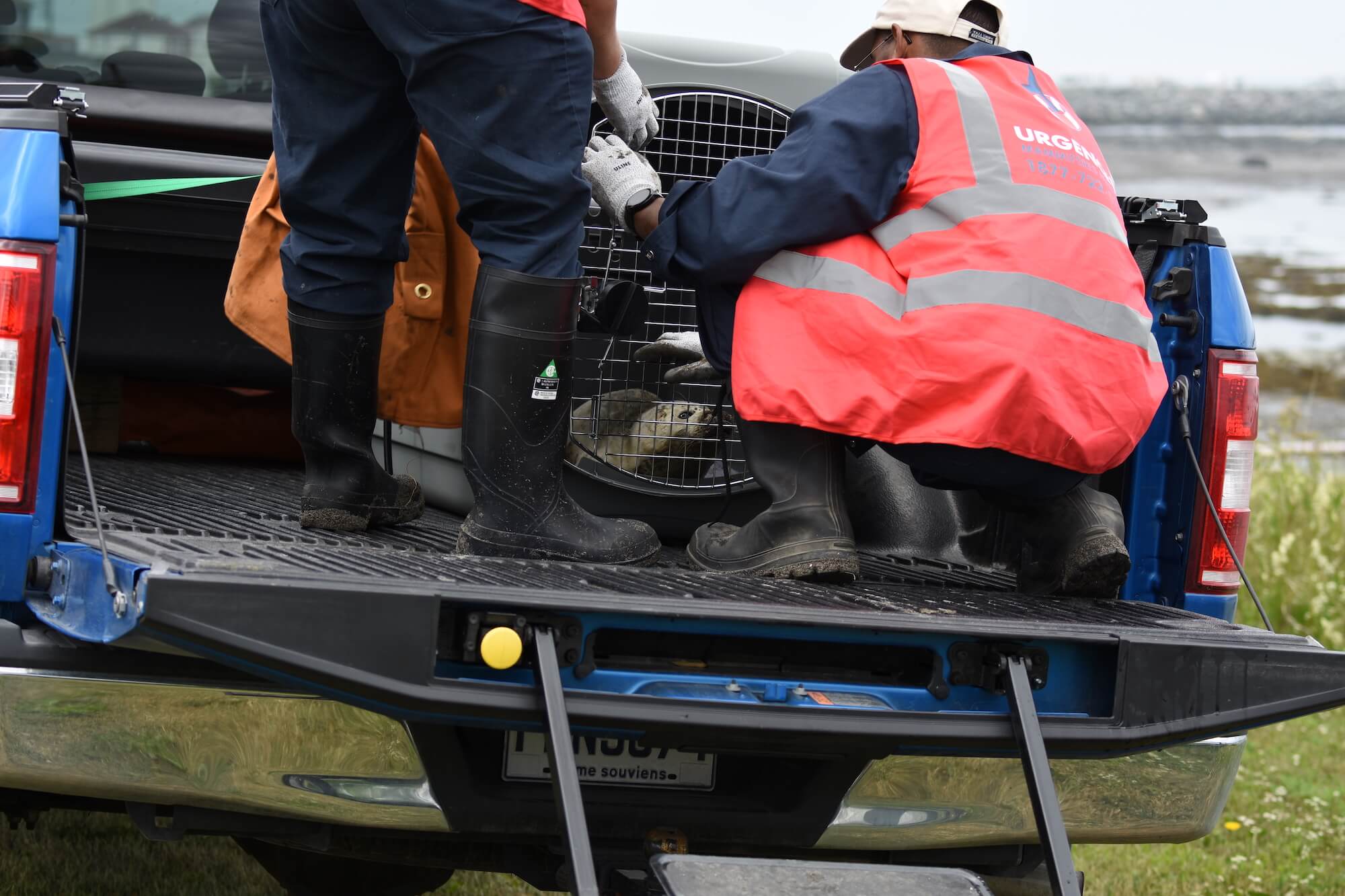In order to be able to respond more quickly and efficiently to emergencies involving marine mammals along the shores of the St. Lawrence, the Quebec Marine Mammal Emergency Response Network (QMMERN) is establishing a mobile team. This team will travel to the field to support volunteers in documenting carcasses and, if necessary, to intervene with animals that are in difficulty. This is the first time that a team exclusively dedicated to such work has operated in Quebec.
A long time in the making
In 2002, over a dozen organizations working directly or indirectly with marine mammals in Quebec convened to take stock of the situation. They faced a considerable challenge. In previous years, every one of these organizations was contacted to deal with dead or vulnerable marine mammals. However, no single body had an official mandate to deal with these cases, the result of which was widely variable responses to incidents. The organizations therefore attempted to find a way to compensate for this shortcoming.
Two years after this meeting, an umbrella group of organizations, the Quebec Marine Mammal Emergency Response Network, was created. From that point on, the various partner members shared responsibilities according to their primary expertise. GREMM assumed responsibility for coordinating the QMMERN and built a network of volunteers that grew with each passing year. These volunteers, based along and on both sides of the St. Lawrence, are the QMMERN’s eyes and hands in the field.
In the years that follow, the lion’s share of field interventions that arise following reported incidents are carried out by volunteers, whether through documentation, carcass sampling or public outreach.
However, one crucial question remains unanswered: who should be responsible for dealing with incidents involving live, vulnerable marine mammals and more importantly, who has the expertise to do so? Although they do a commendable job in carrying out a number of tasks concerning carcasses and harassed seals, volunteers are rarely qualified to intervene in incidents involving live animals due to a lack of proper training, practice and material resources. Most often, it is therefore researchers and technicians with specific expertise who must go to the site. This often comes at the expense of their regular duties, which is just as important to environmental conservation work as rescuing one or a few endangered individuals.
The arrival of the mobile team therefore bridges this gap and boosts the QMMERN’s efficiency.
What exactly will the mobile team do?
“Our main objective with the mobile team is above all to have people trained to work with live animals,” explains QMMERN coordinator Robert Michaud. Composed of four people (two on each side of the St. Lawrence), the new mobile team will carry out as-needed releases and relocations of small marine mammals in a manner that is safe for both the animal(s) and the responder(s). The team will also raise public awareness on the ground with regard to various issues concerning co-existence with marine mammals, e.g. the harassment of seals.
Although they attract a great deal of local and media attention, reports of live stranded or vulnerable animals are generally less frequent than those of dead animals. Carcass documentation is what will probably keep the mobile team busy most of the time. With the assistance of volunteers, members of the mobile team will be able to rigorously measure, analyze, photograph, count and sample carcasses reported on both sides of the St. Lawrence. By doing so, they will collect critical information for a better understanding (and therefore better protection) of this ecosystem. The presence of the mobile team will also allow for the continuous training of volunteers.


